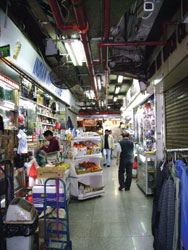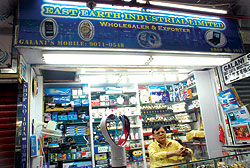 India and Hong Kong have had a long experience of interaction and commerce. Many Indians were brought to the islands during the years prior to the Second World War. Families of the first Indian expatriates to the country have continued to live work in Hong Kong even after it was officially handed over by the British to the Chinese Government in 1999.
India and Hong Kong have had a long experience of interaction and commerce. Many Indians were brought to the islands during the years prior to the Second World War. Families of the first Indian expatriates to the country have continued to live work in Hong Kong even after it was officially handed over by the British to the Chinese Government in 1999.
Working in Hong Kong has become a good opportunity for many Indians. In the years before the Indian independence, Indians were part of the civil service and security forces in the Hong Kong islands. After independence, many Indian nationals returned to the old country while others remained on the islands despite citizenship not offered them.
While many went on to do business and other services, the recent years have seen many Indian nationals being employed in banking, airlines, medical and media services in the country. The largest employers of Indians are banking and financial sectors in the country, followed by the information technology and the telecommunications sectors of the country.
 Some though still retain the old services that the first Indian expatriates to the islands performed. Many Indian tailors still retain shops on Nathan Road and Mody Road in Tsim Sha Tsui. Other Indian businesses in the area include retail stores and Indian restaurants. Recently, there has been a resurgence of yoga and ayurvedic centers in the area.
Some though still retain the old services that the first Indian expatriates to the islands performed. Many Indian tailors still retain shops on Nathan Road and Mody Road in Tsim Sha Tsui. Other Indian businesses in the area include retail stores and Indian restaurants. Recently, there has been a resurgence of yoga and ayurvedic centers in the area.
As for other Indians working in Hong Kong, a recent census showed that nearly 32% work at management level positions. Another 23% of the Indian population is employed as professionals or in mid-level management positions. 18.1% are employed in entry-level positions while 4.9% are in blue-collar positions. The greater majority of Indians working in non-technological occupations are engaged in housekeeping and domestic work.
 As part of their assimilation process in Hong Kong SAR, many Indians in the country speak Cantonese and thus become better adapted to the the country. Many new Indians to the area though are unable to communicate in Cantonese thus do not have the social ability to voice out their concerns and comments in the region. In some instances, they fall victim to violence and discrimination but opt not to report them because of the language barrier.
As part of their assimilation process in Hong Kong SAR, many Indians in the country speak Cantonese and thus become better adapted to the the country. Many new Indians to the area though are unable to communicate in Cantonese thus do not have the social ability to voice out their concerns and comments in the region. In some instances, they fall victim to violence and discrimination but opt not to report them because of the language barrier.
The Indian Government though has become more proactive in their services to non-resident Indians and persons of Indian origin not only in Hong Kong but the world over.
Even with the shadow of Mainland China in the horizon, many cultures and cuisines flourish amongst the many immigrants that reside in the small country. Indian food has become one of the major culinary forces in the area and there are several top Indian restaurants in Hong Kong.
|